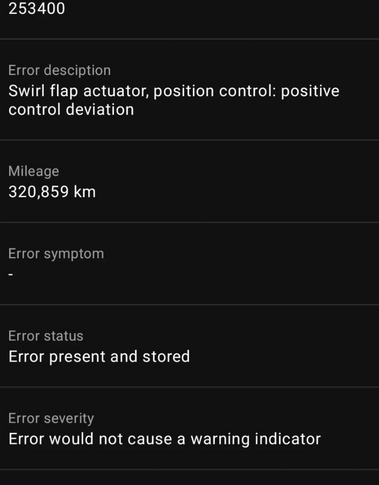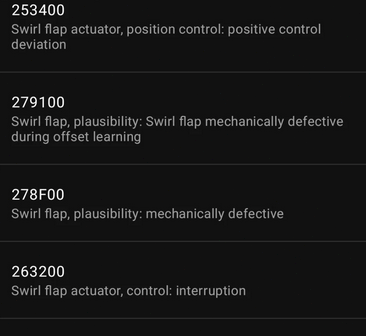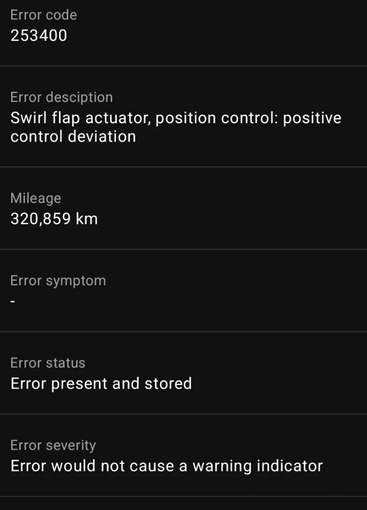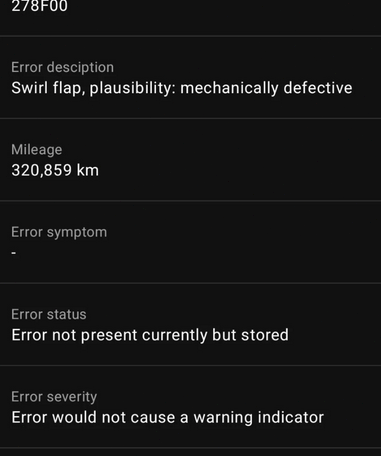
Psychil
Members-
Posts
66 -
Joined
-
Last visited
Everything posted by Psychil
-
FSD 12.5.2 on Hardware 4 Experiences Reduced Performance
Psychil replied to Treeri's topic in General Car Chat
My 2023 Model Y exhibits the similar behaviour in Autopilot with Autosteer. A curve in the road features a vehicle positioned in the centre median, yet not within the travel lanes, occasionally for reasons I cannot discern. The absence of a straightforward "resume" also frustrates me. -
e I possess the identical vehicle; the handling is intriguing. Dragonslayer evokes memories of a video game on my initial computer
-
I have heard and read that I can verify the flap turning position via BimmerLink. Is this correct? I possess the application.
-
I was informed that my BMW specialist could delete it, therefore I presume it is a B47. Does deletion exacerbate the situation in the long term? I have heard it can impact miles per gallon, fuel usage, and other factors. What is your perspective on this, my friend?
-
-
I apologise for any inadvertent duplicate messages; these are the correct items.
-
-
-
-
Additional codes
-
I presume it is either obstructed or adhering. Since I am not receiving any alerts on my dashboard, I am uncertain whether I should proceed with inaction. Will it damage my vehicle?
-
Greetings, everyone. I connected the engine and cleared all errors, except for one persistent error related to the swirl flap. Although I have not encountered any issues, it concerns me, and I wish to prevent any problems in the future. What recommendations do you have for me? Is it capable of being cleaned? Is it advisable to delete it? Should I alter it? What are your thoughts? I would like real-time responses, as I am quite stressed at the moment.
-
During my most recent wiper replacement, I purchased a Kia-branded pair from the dealership, which upon inspection, seemed to be indistinguishable from Bosch Aerotwin wipers, but without any identifying marks. They were far superior than anything we had ever seen. My father advocated for the use of white vinegar to eliminate filth or residue that causes wipers to judder.
-
I own a tiny collection of mobile phones, particularly Nokia, with several in their original packaging and a couple still sealed. There are some classic phones included as well. It is accurate to assert that active collecting ceased many years ago, shortly after Mrs. D entered my home office to discover me updating my spreadsheet cataloguing them all.
-
The aforementioned point is valid. However, I also believe the bag may be ineffective.
-
The Driver Profile is set to default as a guest.
Psychil replied to MDMH757's topic in General Car Chat
In our garage, I would estimate that mine recognises me 99% of the time. Outdoors in the sunlight, the conditions are at best fifty-fifty. I ensure to examine the sensor as well. -
Given that the smart top costs over £400 (I examined one for my SLK), it represents a reasonable price. Additionally, I am confident they can perform an Android Auto upgrade while servicing your vehicle, albeit at a considerable expense. If you remain with the vehicle during the process, proceed up the road towards the M3; not far from there is a bar where we enjoyed a pleasant lunch and a satisfactory pint while we waited.
-
Given that it pertains to "electrics" rather than mechanical systems, comandonline.co.uk in Lightwater, Surrey, near Junction 3 of the M3, may be a viable option
-
AGM batteries possess vent holes on their lateral surfaces.
-
Typically, premiums are computed via the numberwang principle.
-
Prudent choice, as others have noted. If you are really interested in the Sportage model, several options are available within the dealer network; nevertheless, only proceed with a purchase if it has an impeccable service history and the price is commensurate with its age. Having a KIA dealership within convenient driving distance is advantageous regardless of the brand one contemplates purchasing. It is advisable to review the articles to discern which model versions should be avoided and which ones provide minimal issues. This site is exemplary among automotive forums, and you have already acknowledged and implemented the insights of knowledgeable individuals. The servicing prices within the dealer network are reasonable; however, to maintain the warranty and reduce service expenses significantly, it is advisable to enrol in a KIA Care plan rather than a dealer plan. The plans provide varying durations, and while alternative providers may consistently lower KIA's markup pricing, none can deliver the crucial KIA endorsement in the service record. The agreement about KIA's warranty coverage is accessible online and is among the finest in the industry. Kia has documented the content to be addressed and the duration of coverage. Owners are just need to ensure that the vehicle is maintained punctually and within the specified mileage; nothing more. Most car manufacturers offer the standard warranty of 3 years or 60,000 miles, with no coverage thereafter; however, the Korean brands extend this warranty to 5 or 7 years, depending on whether the vehicle is a Hyundai, KIA, SsangYong (now KGM), or Genesis. To prevent skipping a service, it is important to schedule the automobile at your preferred dealership 8-12 weeks in advance to guarantee it can be addressed without exceeding the permitted timeframe. Simply schedule an appropriate date on your computer's calendar to finalise the booking. Possessing a legitimate KIA service plan and consistently scheduling services with your chosen dealer would likely prevent any disputes over warranty work, should it become necessary. Best wishes in your future endeavours after your decision to forgo the purchase of the Sportage you contemplated. Within the forum, several individuals are repeat clients of the KIA brand, while others, like myself, have alternated between various Korean brands for various reasons.
-
Engaging video on OEM tires available on the esteemed 'Tyre Review' channel:
-
Is there no gearbox oil pan to remove?




